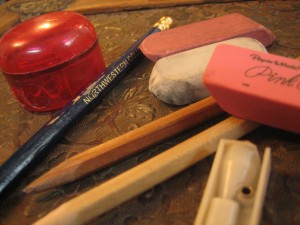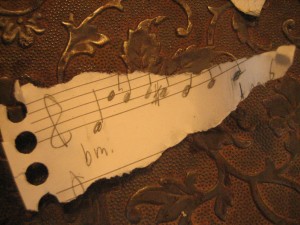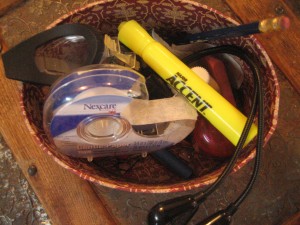Have you ever not started a practice session simply because you know it will take some time to assemble the necessary tools, books, or information? Sometimes the work involved in getting ready for a project (or practice session) is more onerous than the task itself.
Sometimes it’s enough just to sit down at your harp and play. It’s even better if you have a music stand and your music. But here are a few ideas on how you can make effective practicing both hassle-free and inviting.
1. Space
This space should be utterly devoted to your instrument and all the ‘stuff’ that goes with it. It can be a room or just a corner, but ideally you want to avoid having to move your harp in order to practice. You should have room for the stand and the chair as well.
2. Your music – nearby
Don’t make yourself run across the room to go get that other book. It much too easy to simply not practice whatever is beyond your reach. Store your music within a few steps of your harp.

*note the proximity between the books and the harp
3. A pencil, sharpened, with eraser
I store a few of those big pink erasers next to my harp, as well as a tiny pencil sharpener. With a pencil close by, you can note mistakes that appear frequently, questions to ask your teacher in your next lessons, or thoughts that are distracting you. (If you write them down, you don’t have to remember them until you are done practicing for the day.)
4. Metronome
You might think you’re playing with a steady tempo; it is always good to check at least once to confirm that.

5. Adequate light
Don’t squint at your music! It’s bad for your eyes, it will give you wrinkles (eventually), and you can’t play what you can’t see.
6. Tuner and tuning key
Playing an instrument that is in tune promotes developing a good ear. It is also healthier for your harp if you keep it in tune, and I find it more personally fulfilling to play a harp that is tuned. Try it sometime: if you feel like everything you play sounds just a little odd, tune your harp and hear it ring clear!
Other item I keep near my harp:
1. A timer, useful for planning how many pages of music or repeats of a piece of music I need for an 8-minute prelude. It also helps keep me focused: I set the timer for 50 minutes and I don’t let any distractions rip me away until that timer rings.
2. Nexcare First Aid tape, for playing with blisters.
3. Mandolin picks, for playing really loud glissandos without killing my fingers.

4. A notebook, to record personal music goals or to write down trouble spots. This is especially useful on lenghthy pieces so that you can pinpoint the hardest measures rather than having to play through the whole piece just to figure out what needs work.
5. Yellow highlighter, for those repeats and pedal markings my brain refuses to notice.
6. Staff paper, for when inspiration strikes and that lovely melody won’t last while you scramble across the room to find an empty sheet of paper.

Swimming goggles too, apparently.
More (not so useful) items I keep in the vicinity of my harp:
One bracelet (removed while practicing because it kept making noise on the soundboard), Whiteout, a stand light, Post-it notes, Chapstick, one red balloon, a paperclip, and three quarters.
Harpists and other musicians, do you have anything to add to this list? Please comment below!
Click here to find out what I’ve been practicing recently.
Stephanie Claussen teaches harp lessons out of her home in St. Paul, Minnesota. She strives to ingrain in each student not only correct hand position, rhythm and a sense of musicality, but also a love for making music.

